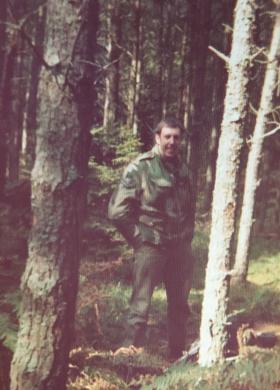
Aldershot - Gone but not Forgotten
In early 2011 the Airborne Assault Museum staff of Jon Baker and Becks Skinner travelled to Aldershot, from Duxford.
When the 1st Parachute Brigade moved from Hardwick to the Bulford area in Wiltshire in 1942 an Airborne Forces Depot was formed at Hardwick from the units left behind.
It started as an unofficial establishment, but was created as a properly organized unit, training and holding recruits before they went to the Parachute Training School, as well as rehabilitating the temporary unfit from injuries.
The War Office approved a War Establishment for the Depot on 25th December 1942, appointing Lt Col W. Giles MC (Ox and Bucks) as its first Commanding Officer. The Depot was given an extended role and consisted of a Depot Company, a Pre-Parachute Training Company, a Battle School, Holding Company and an Airfield Detachment, which was stationed at No 1 PTS RAF Ringway. It was during this period that all pre-jump ground training was moved from Hardwick to Ringway.
In March 1944 the Battle School closed, the Holding Unit was moved to Clay Cross, while a new preliminary Battle/Tactical School was set up at Dore and Totley. The Selection Company and Depot Administrative Unit remained at Hardwick.
In April 1946 the Depot moved to Albany Barracks on the Isle of Wight and the involvement of Airborne Forces at Hardwick Hall ceased. In October the Depot moved to Maida Barracks Aldershot, where it remained for 22 years before moving to Browning Barracks Aldershot in 1968.
The Depot organization consisted of a headquarters, Recruit Company with up to five platoons and a remedial training platoon, ‘P’ (Pre-Parachute Selection) Company and Headquarters company, responsible for all administrative and logistic support. A Junior Parachute Company, training junior soldiers and bandsmen for the Regiment formed in 1961 and was disbanded in 1993. The Depot also housed the ‘Red Devils’ free-fall Parachute Regiment display team.
Depot, The Parachute Regiment and Airborne Forces, closed in early 1993 as part of an Army wide rationalisation of the recruit training system. All recruits were trained initially at the Army’s Individual Training Organization (ITO) at the Army Training Regiment (ATR) at Lichfield, before moving on to the Parachute Company with the Infantry Training Centre (ITC) at Catterick, where they also completed their specialist arms training and P Company. Since around 2002 both Phase 1 and 2 infantry training has been undertaken at ITC Catterick.
Commandants:
Airborne Forces Depot
1942 Lt Col LW Giles, MC
1942-6 Lt Col RJF Campbell
1946-7 Lt Col TJ Firbank, MC
1947-8 Lt Col TGD Rowley
Depot The Parachute Regiment and Airborne Forces
1948-50 Col KT Darling, DSO, OBE.
1951-2 Col AWE Daniell.
1952-5 Col HB Coxon, DSO, MC
1957-60 Col G Hewetson, DSO, OBE, TD.
Commanding Officers:
1959-60 Lt Col GR Flood, MC
1960-2 Lt Col JL Waddy, OBE
1962-5 Lt Col SCAN Bishop, OBE
1965-8 Lt Col MAJ Tugwell
1968-70 Lt Col MH Jones
1970-2 Lt Col PLF Baillon
1972-4 Lt Col PF Walter, MBE, MC
1974-7 Lt Col RG Southerst
1977-9 Lt Col GD Farrell, MBE
1979-81 Lt Col MA Benjamin
1981-4 Lt Col SDRW Brewis, MBE
1984-7 Lt Col DL Roberts, MBE
1987-9 Lt Col TA Marsh
1989-91 Lt Col DJ Campbell
1991-3 Lt Col JJP Poraj-Wilczynski
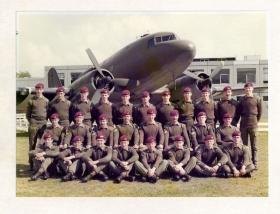
433 Platoon
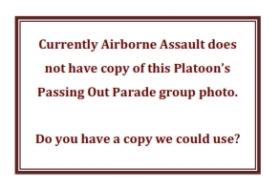
431 Platoon
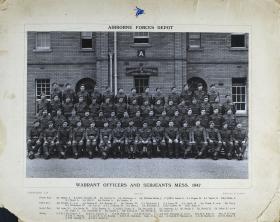
Group Photograph of Airborne Forces Depot, WO and Sergeants' Mess, 1947

Airborne Establishments N.C.O Instructors School, Potential Training Cadre No.1 November 1947
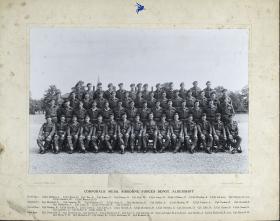
Group Photograph of Corporals' Mess, Airborne Forces Depot
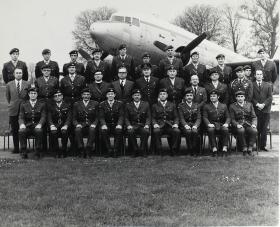
Group Photograph of Officers' Mess of the Airborne Forces Depot, 1974
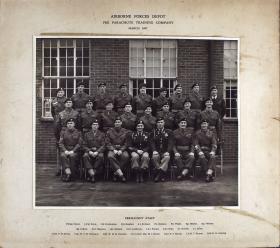
Group Photograph of the Pre Parachute Training Company, Airborne Forces Depot, 1957
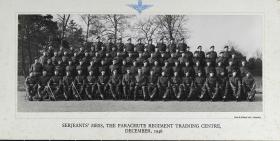
Group Photograph of the Sergeants' Mess, The Parachute Regiment Training Centre, December 1946
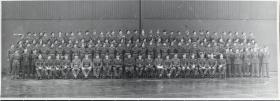
Group Photograph of Parachute Training Course 279

Group Photograph of Parachute Training Course 272

Group Photograph of Parachute Training Course 278
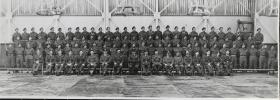
Group Photograph of Parachute Training Course 280

Group Photograph of Parachute Training Course 275

Group Photograph of Parachute Training Course 277

Group Photograph of Parachute Training Course 266

Group Photograph of Parachute Training Course 281

Group Photograph of Parachute Training Course 2 TA 1950

Group Photograph of Parachute Training Course, 1950

Group Photograph of Parachute Training Course, 1950 (1)

Group Photograph of Parachute Training Course 283

Group Photograph of Parachute Training Course 282

Group Photograph of Parachute Training Course 284

Group Photograph of Parachute Training Course 285
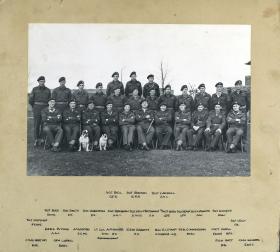
WO's Mess, Airborne Forces Depot, 1950s
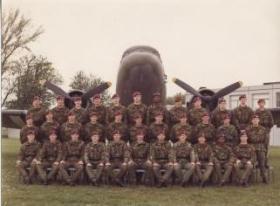
442 Platoon, Aldershot, May 1978.
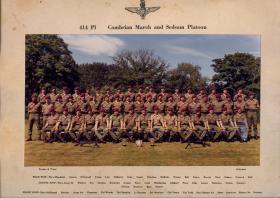
Group Photograph of 414 Platoon
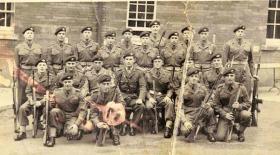
A recruit intake - probably Platoon Intake 167, 1959
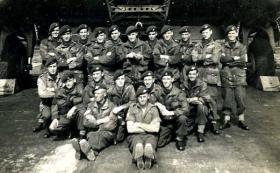
Demonstration and Experimental Company, Depot, The Parachute Regiment and Airborne Forces.
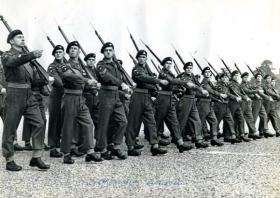
Demonstration and Experimental Company, Depot, being inspected by Field Marshal Montgomery, early 1950s.
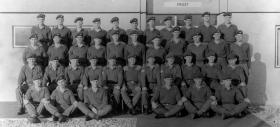
336 Platoon, Depot Aldershot
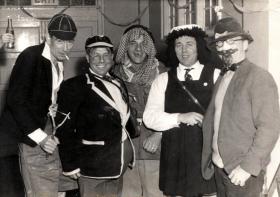
Sgts' Mess Fancy Dress, Aldershot, late 1960s.
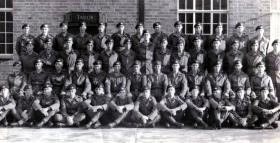
298 Platoon, date unknown.
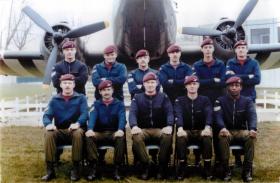
P Company Staff. 1988.
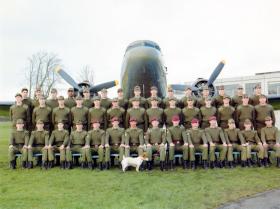
Intake of 10 PARA (V), 1987.
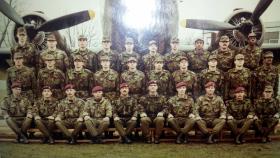
Recruit cadre T104 February 1985
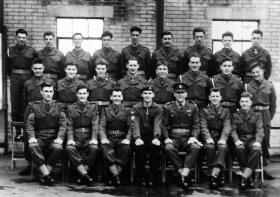
P Company 415 platoon, February 1956.
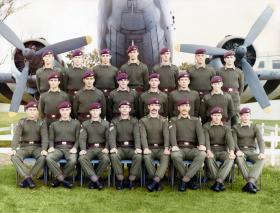
482 Platoon
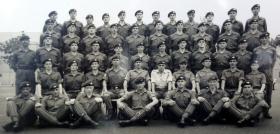
357 Platoon
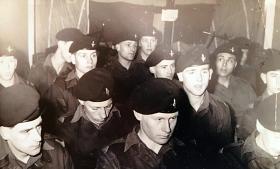
274 Pln, Recruit Coy during a training lecture, Film Room, Maida Bks, 1964.
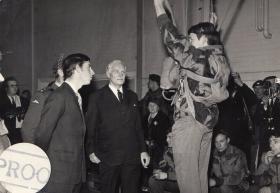
HRH Prince of Wales at Aldershot
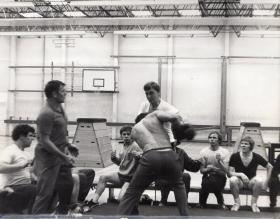
Milling
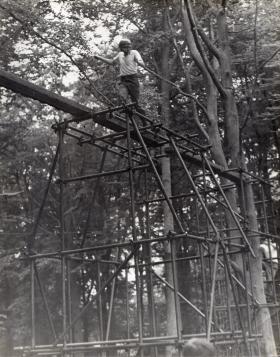
Trainasium C1971
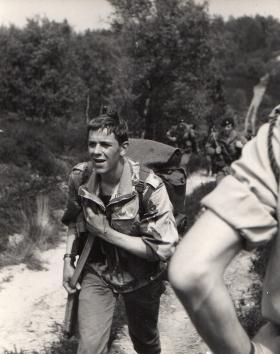
Cesar's Camp C1971
Depot Aldershot 1955
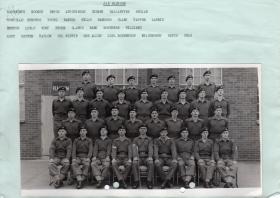
216 Platoon
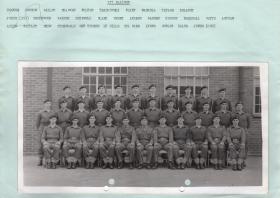
217 Platoon
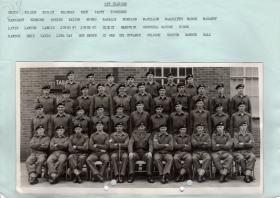
218 Platoon
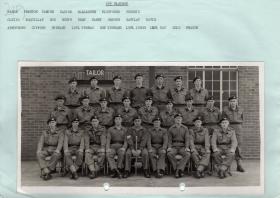
219 Platoon
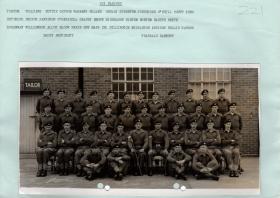
221 Platoon
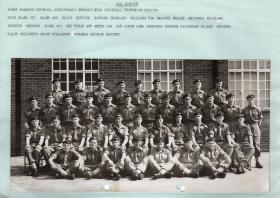
222 Platoon
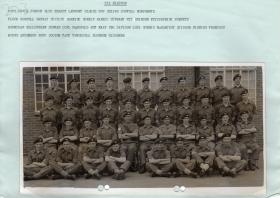
223 Platoon
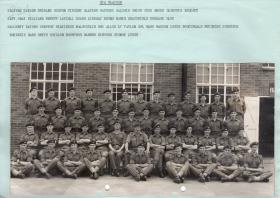
224 Platoon
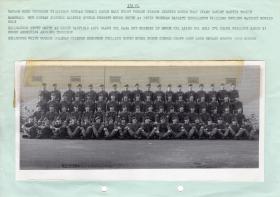
372 Platoon
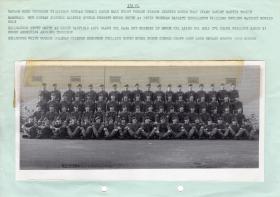
372 Platoon
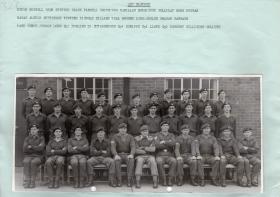
327 Platoon
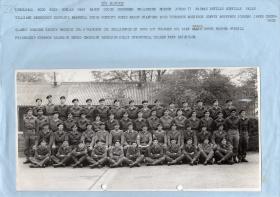
285 Platoon Passing Out Parade 24 April 1965
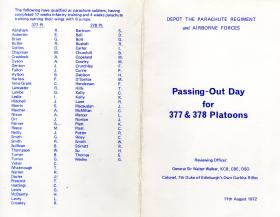
Passing Out Parade leaflet for Platoons 377 and 378 March 1972
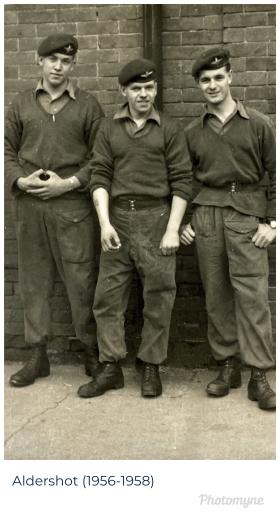
Aldershot 1956
679 Pln Passing Out Photograph
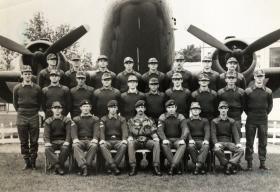
Dick Trigger at the Para Depot 1975, Browning Barracks, Aldershot. 421 Platoon
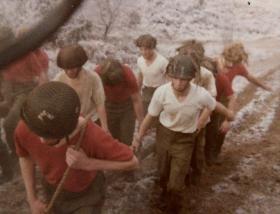
421 Pln P Coy Log race December 1975
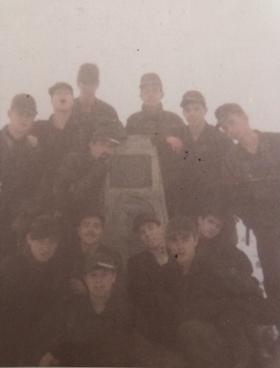
421 Pln Wales November 1975
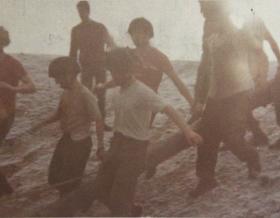
421 Platoon P Coy December 1975. Log Race
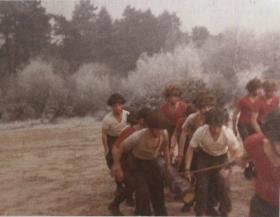
421 Platoon P Coy Log Race December 1975
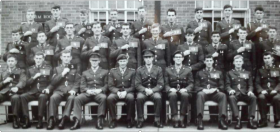
Aldershot 1967 P Coy
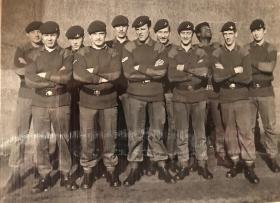
1 Section, 1 Platoon, A Company 2 Para 1972
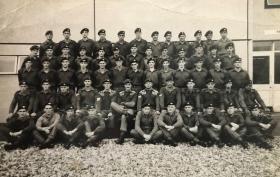
348 Platoon, Depot Para 1969
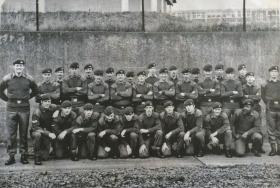
1 Platoon, A Company, 2 Para in Normandy Barracks, Aldershot about 1972
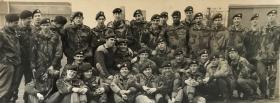
Abingdon 1970
Colours Presentation July 2021 at Merville Barracks, Colchester
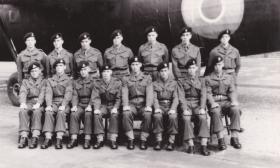
1950 Volunteered P Company Para Selection course, Aldershot and Abingdon.
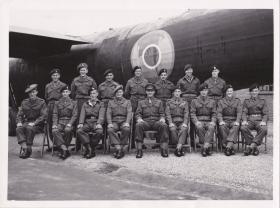
1950-08 P Company Para Selection course, Aldershot
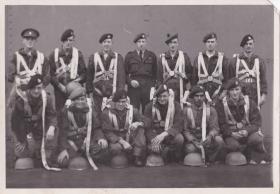
1950-09 Parachute Training School, RAF, Abingdon, course 296
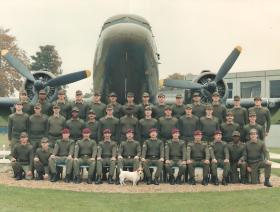
P Company Recruits circa 1988 Browning Barracks in Aldershot
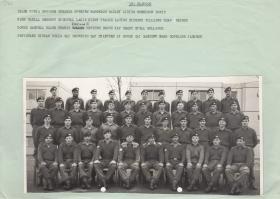
361 Platoon 2 April 1971
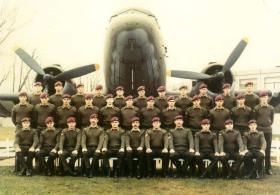
477 Platoon 1982
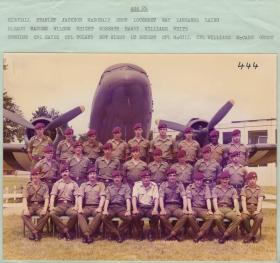
444 Platoon Passing Out Parade August 1978
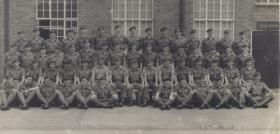
306 Platoon 1966
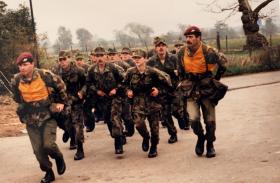
Early 80s with recruits leaving Cultybraggan for another tab
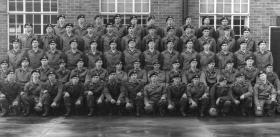
304 Pln Maida Bks 1966

P Coy Pln 288 1965

205 Platoon

206 Platoon

208 Platoon

209 Platoon

210 Platoon

212 Platoon

213 Platoon

214 Platoon

215 Platoon

216 Platoon

217 Platoon

221 Platoon

222 Platoon

223 Platoon

224 Platoon

225 Platoon

226 Platoon

230 Platoon

231 Platoon

232 Platoon

234 Platoon

235 Platoon

238 Platoon

238 Retraining Platoon

239 Platoon

239 Retraining Platoon

240 retraining Platoon

240 Platoon

242 Platoon

252 Platoon

256 Platoon

260 Platoon

261 Platoon

262 Platoon

264 Platoon

265 Platoon

267 Platoon

268 Platoon

269 Platoon

270 Platoon

271 Platoon

272 Platoon

273 Platoon

274 Platoon

275 Platoon

276 Platoon

277 Platoon

278 Platoon

279 Platoon

280 Platoon

281 Platoon

282 Platoon

285 Platoon

283 Platoon

288 Platoon

290 Platoon

289 Platoon

290 Platoon (Main)

291 Platoon

292 Platoon

293 Platoon

294 Platoon

295 Platoon

296 Platoon (Main)

296 Platoon

297 Platoon

298 Platoon
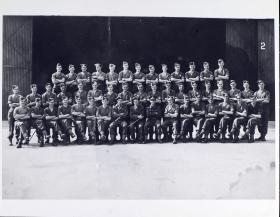
Group Photograph of Parachute Training Course, 1940
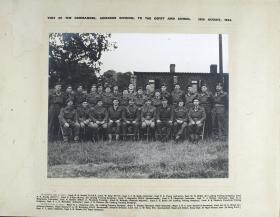
Group Photograph of visit by Major General Browning, to the Airborne Forces Depot and School, 1942
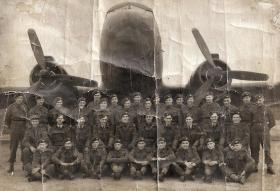
Group photo believed to be members of Course 102, RAF Ringway, February 1944.
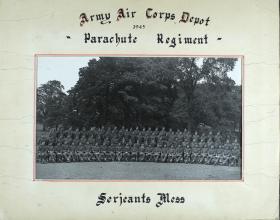
Group Photograph of Airborne Forces Depot, WO and Sergeants' Mess, 1945
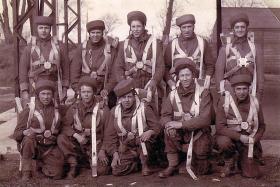
D 5 stick from Parachute course 154 RAF Ringway, March 1945.
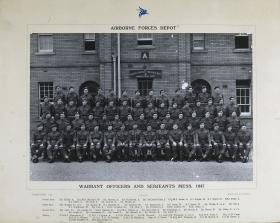
Group Photograph of the WO and Sergeants' Mess, the Parachute Regiment and Airborne Forces Depot, 1947
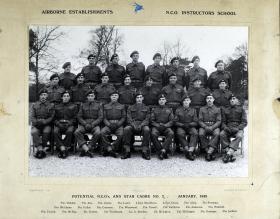
Airborne Establishments N.C.O Instructors School, Potential Training NCO's and Star Cadre No.2 January 1948
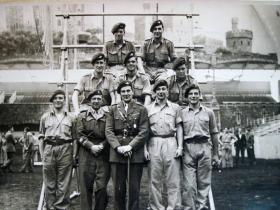
Southern Command Obstacle Course Team Royal Tournament, 1948
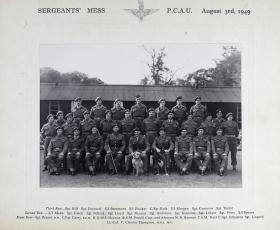
Group Photograph of Sergeant's Mess, Parachute Course Administration Unit, 1949
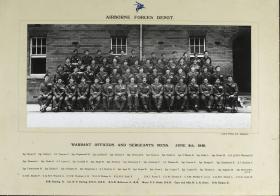
Group Photograph of the WO and Sergeants' Mess, the Parachute Regiment and Airborne Forces Depot, 1949
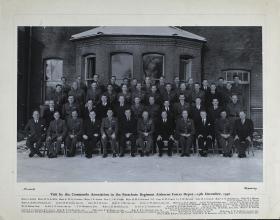
Visit by the Commando Association to the Airborne Forces Depot, 1950
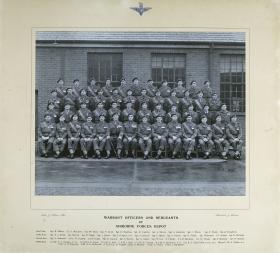
Group Photograph of the WO and Sergeants of the Airborne Forces Depot, 1951
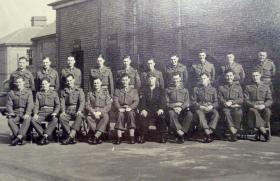
P Company Depot Aldershot c1951
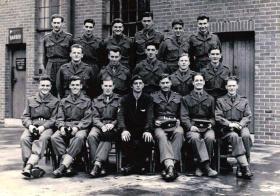
Recruits, Aldershot, September 1951.
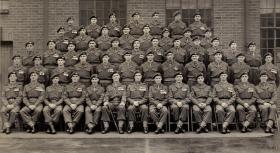
Group photograph of the Corporals' Mess, Airborne Forces Depot, c.1952
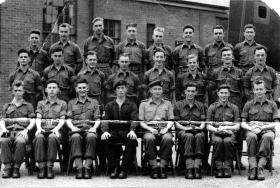
P Company, Aldershot, July 1952.
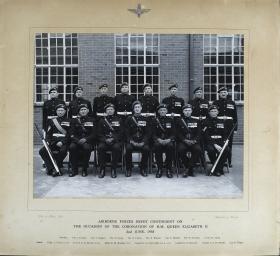
Group Photograph of the Airborne Forces Depot contingent for the Coronation of H.M Queen Elizabeth II, 1953
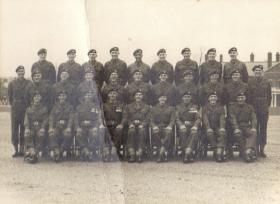
Group photograph for Passing Out Parade, Aldershot, 1953
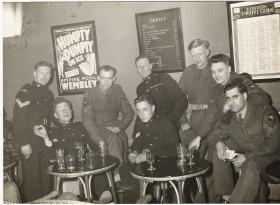
Soldiers from Airborne Forces Depot enjoy a night out in London, 1953
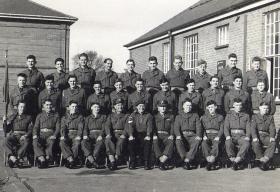
1 Platoon, Pre Para course at Aldershot, November 1953.
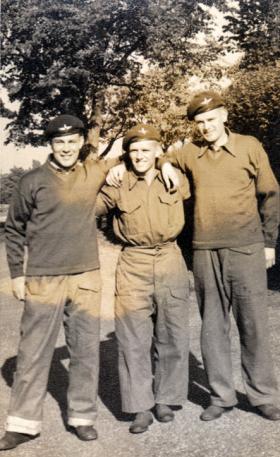
Middle: Pte Pavett, Airborne Forces Depot, Aldershot, 1954.
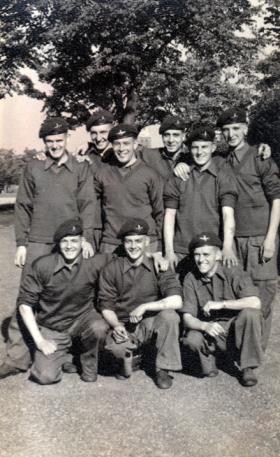
Group of recruits at Airborne Forces Depot, Aldershot, 1954.
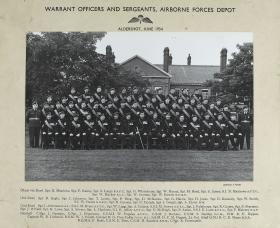
Group Photograph of WO and Sgts' Mess, Airborne Forces Depot, June 1954
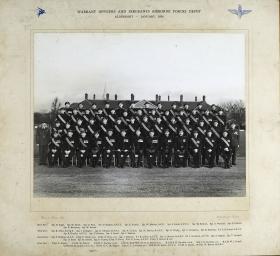
Group Photograph of WO and Sergeants' Mess, Airborne Forces Depot, 1956
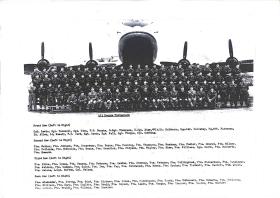
413 course group photo, January 1956
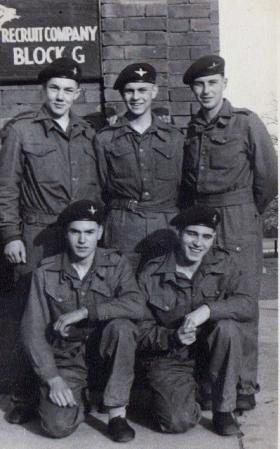
Members of Recruit Company, Depot 1956
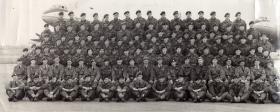
Group photo of Parachute Course 425, Abingdon, July 1956
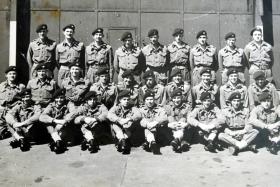
Para Depot, Aldershot, 1957.
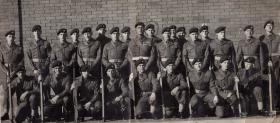
Platoon Intake 156 Depot 1958
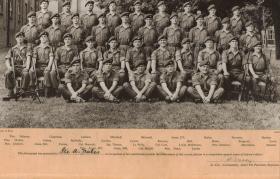
Group photograph of Platoon 217, signed by Col John Waddy, 1960
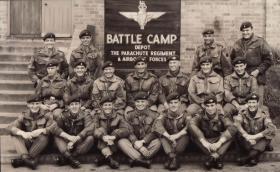
Group photograph of Brecon Battle Camp, 1961
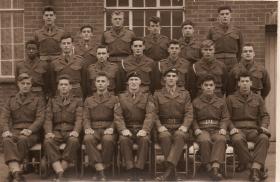
Group photo of P Company recruits, Feb 1961
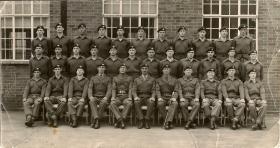
Group Photograph Platoon Intake 242, 1962
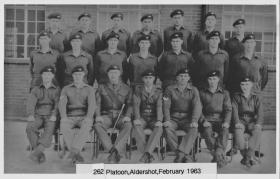
262 Platoon, Maida Barracks, February 1963
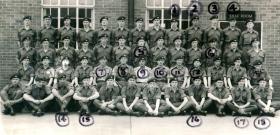
Intake photo of 279 Platoon, Maida Barracks, 1964.
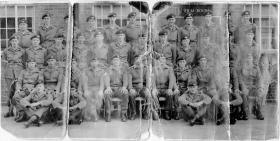
A battered photograph of a platoon intake Maida Barracks c1965
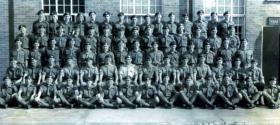
Intake photo of 297 Platoon, Maida Barracks, 1965.
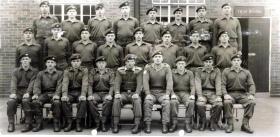
314 Platoon, 1966.
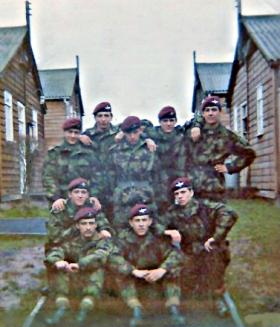
371 Platoon in Brecon, 1971.
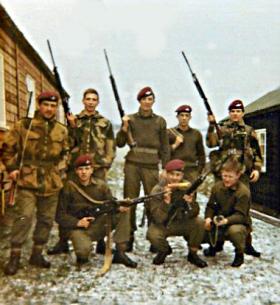
371 Platoon, Brecon, 1971.
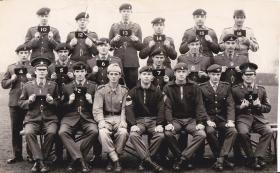
P Company 1972
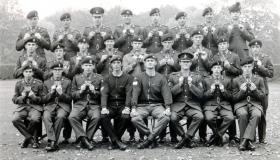
All Arms P Coy 766, 1972.
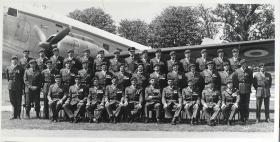
Group Photograph of the Officers' Mess, the Airborne Forces Depot, 1973
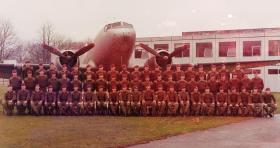
Group photograph of Depot Para 397 Pln, 1973
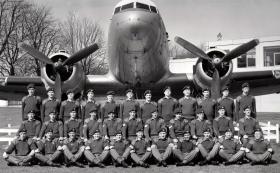
390 Platoon
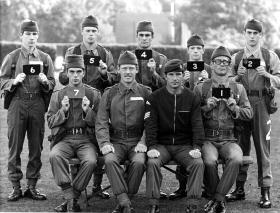
Intake photo of All Arms P Coy Course 809 September 1975.
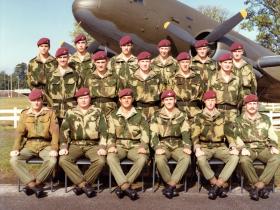
420 Platoon
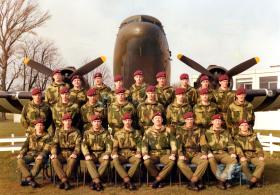
421 Platoon 1975
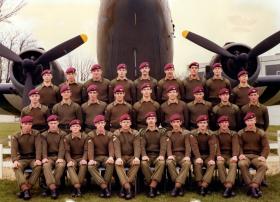
422 Platoon
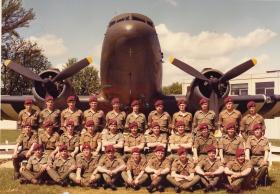
423 Platoon May 1976
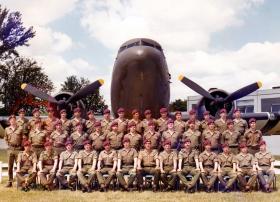
424 Platoon
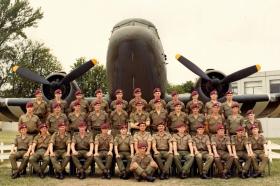
425 Platoon
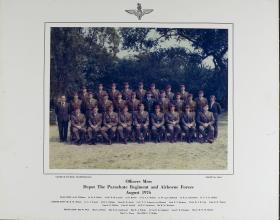
Group Photograph of the Officers' Mess, the Airborne Forces Depot, 1976
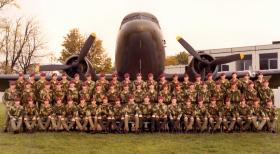
427 Platoon
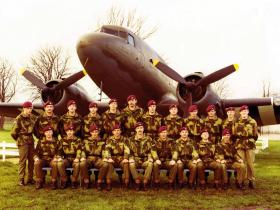
429 Platoon
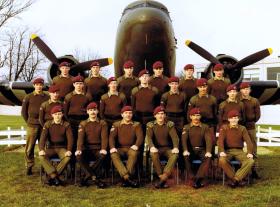
430 Platoon
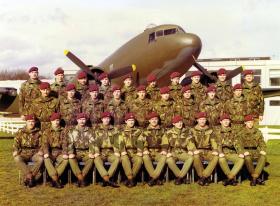
432 Platoon
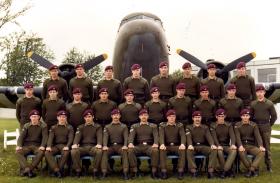
443 Platoon, Aldershot, 1977
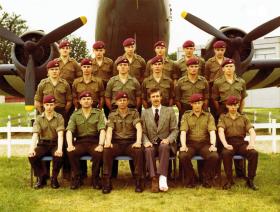
434 Platoon
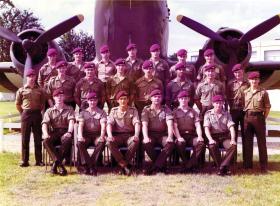
435 Platoon
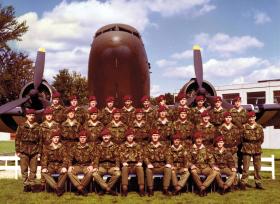
436 Platoon
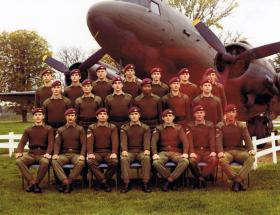
437 Platoon
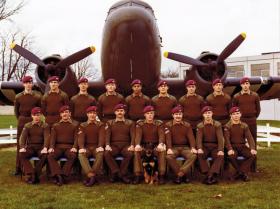
438 Platoon
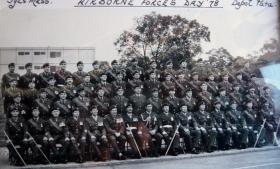
Group photo of Depot PARA Sergeants Mess, Airborne Forces Day, Aldershot, 1978
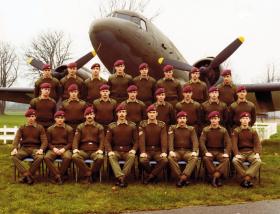
439 Platoon

441 Platoon
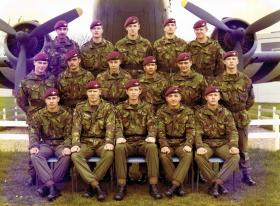
441A Platoon
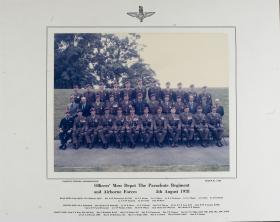
Group Photograph of the Officers' Mess, the Airborne Forces Depot, 1978
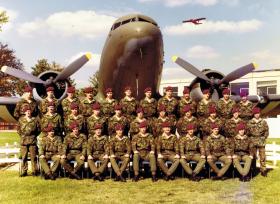
446 Platoon
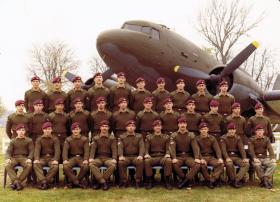
447 Platoon
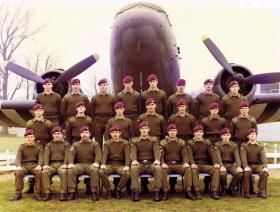
449 Platoon
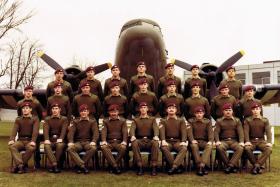
451 Platoon
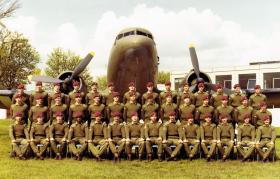
452 Platoon
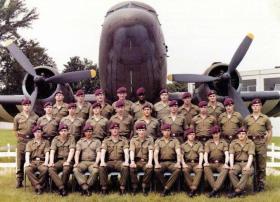
453 Platoon, Depot Para, June 1979.
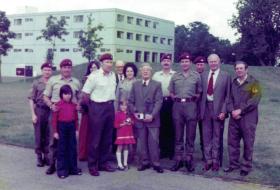
Bill Surman's retirement after 31 years at Depot both serving and civilian, August 1979.
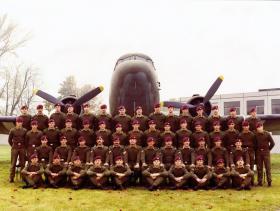
455 and 456 Platoon
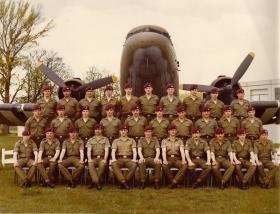
460 Platoon 1980
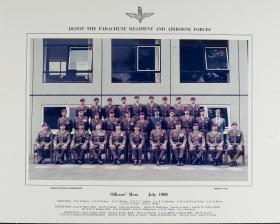
Group Photograph of the Officers' Mess, the Airborne Forces Depot, 1980
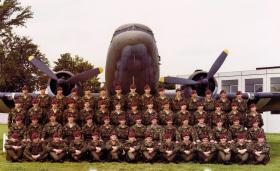
463 Platoon
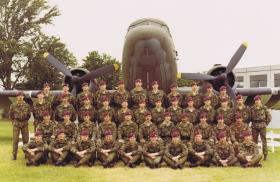
461 Platoon
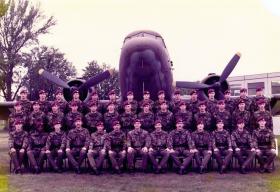
469 Platoon
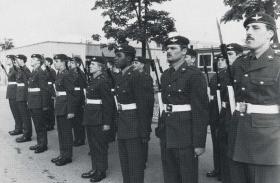
480 Platoon, Depot Para, 16 July 1982.
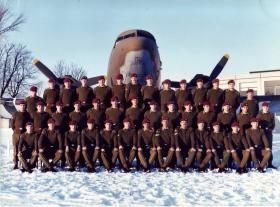
476 Platoon
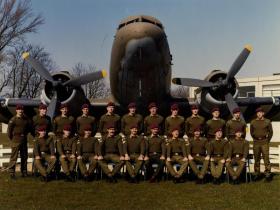
Passing Out photograph of 478 Platoon, March 1982.
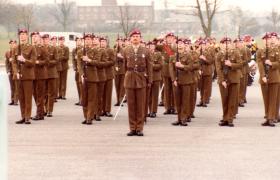
478 Platoon Passing Out Parade, 2 April 1982.
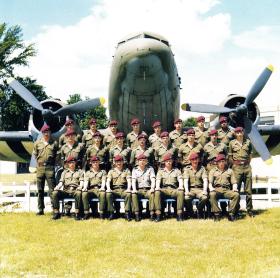
480 Platoon, Depot Para, June 1982.
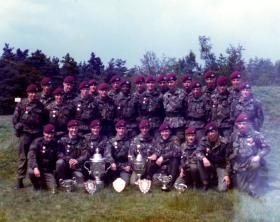
Recruits and Junior Para Coy members at a Skill At Arms Meeting (SAAM), July 1983.
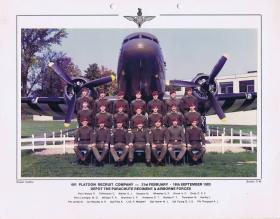
491 Platoon
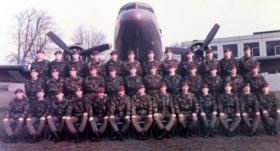
506 Platoon, Depot The Parachute Regiment and Airborne Forces, October 1984 – April 1985.
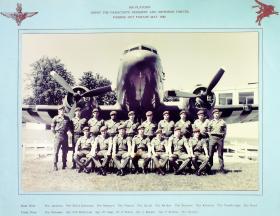
508 Platoon Passing Out photograph, May 1985.
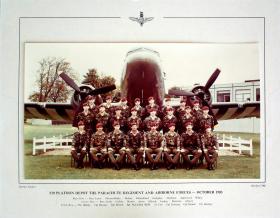
Passing Out photograph of 510 Platoon, October 1985.
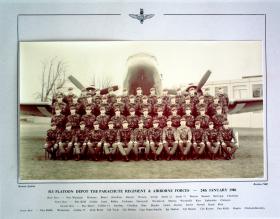
513 Platoon Passing Out photograph, January 1986.
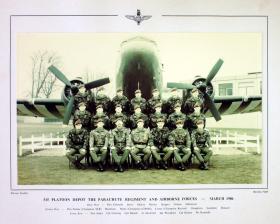
515 Platoon Passing Out photograph, March 1986.
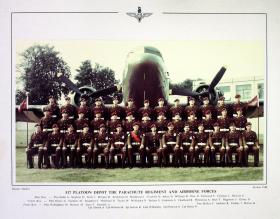
517 PlatoonPassing Out photograph, June 1986.
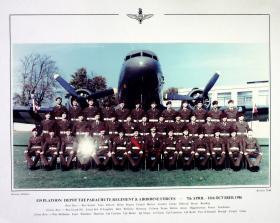
519 Platoon Passing Out photograph, October 1986.
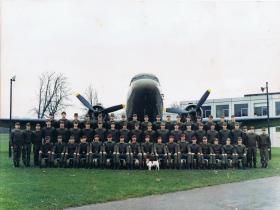
Recruit Cadre 3/87 Depot Para Aldershot
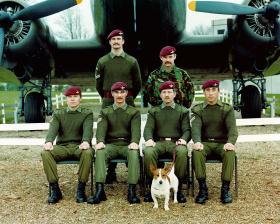
TA Training Team, Depot Para, c1987.
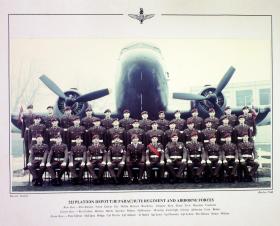
Passing Out photograph of 522 Platoon, January 1987.
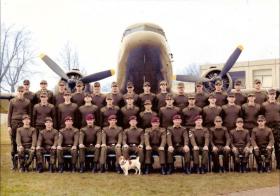
TA P Coy Group Photograph c1988
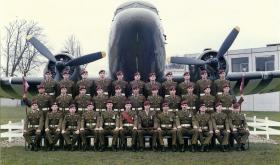
532 Platoon
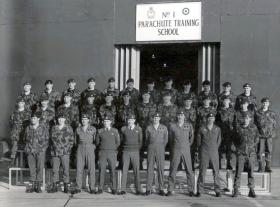
533 Platoon, Brize Norton, March 1988.
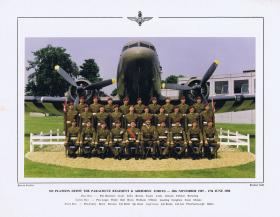
535 Platoon
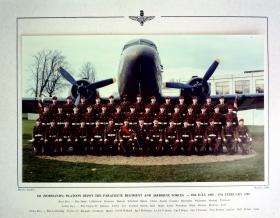
541 Platoon Passing Out photograph, February 1989.
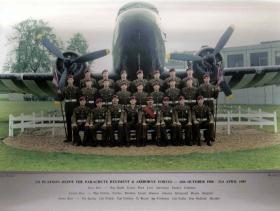
Passing Out photograph of 543 Platoon, April 1989.
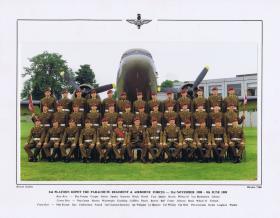
544 Platoon
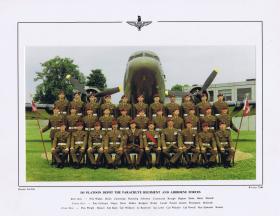
545 Platoon
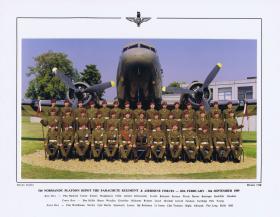
546 Platoon
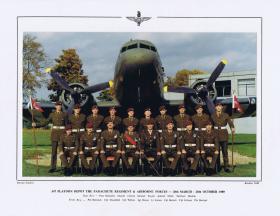
547 Platoon
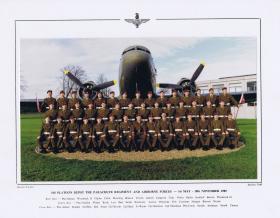
548 Platoon
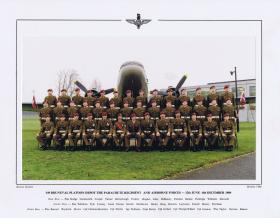
549 Platoon
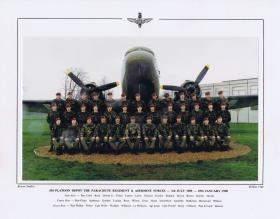
550 Platoon
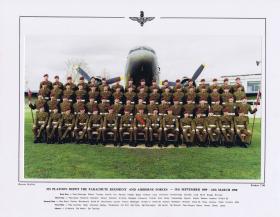
551 Platoon
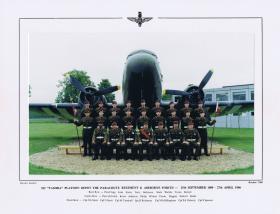
552 Platoon
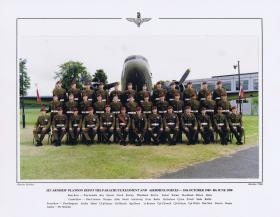
553 Platoon

Group photograph of P Coy Course, Aldershot, July 1990
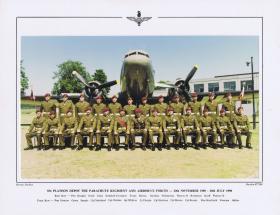
554 Platoon
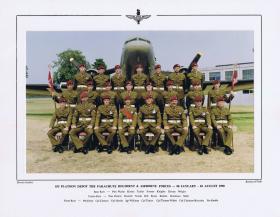
555 Platoon
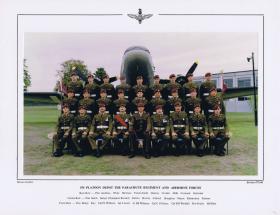
556 Platoon
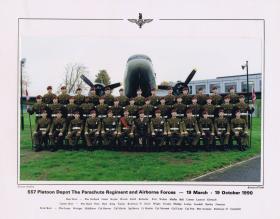
557 Platoon
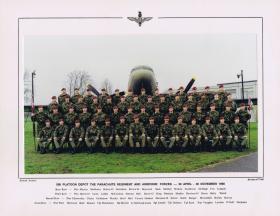
558 Platoon
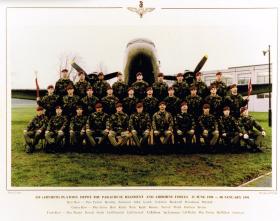
559 Platoon
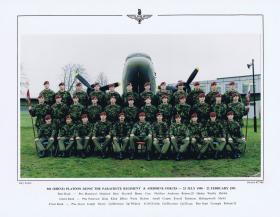
560 Platoon
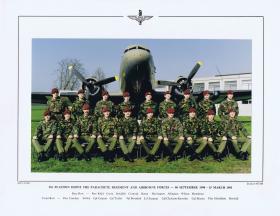
561 Platoon
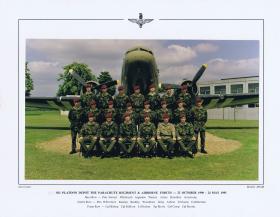
563 Platoon
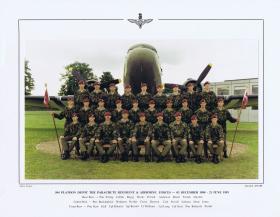
564 Platoon
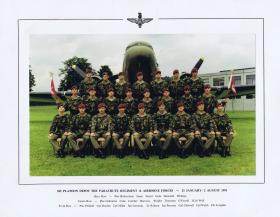
565 Platoon
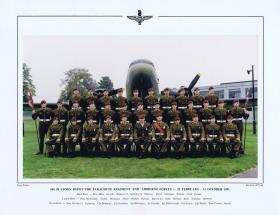
566 Platoon
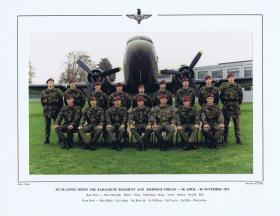
567 Platoon
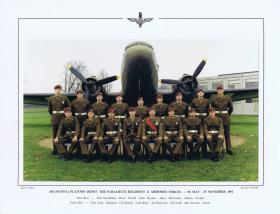
568 Platoon
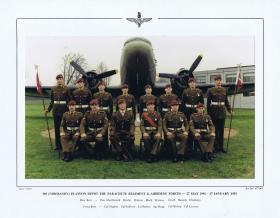
569 Platoon
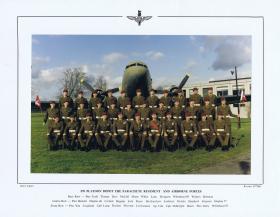
570 Platoon
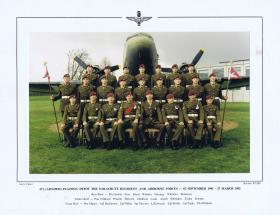
571 Platoon
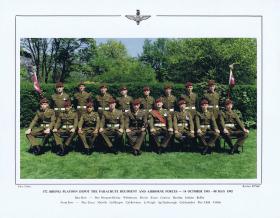
572 Platoon
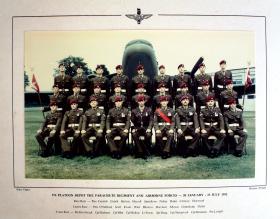
574 Platoon Passing Out photograph, July 1992.
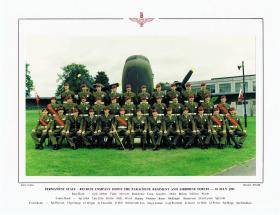
Permanent Staff, Recruit Company, Depot, July 1992.
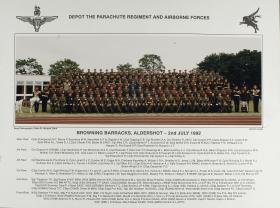
Group Photograph of the Parachute Regiment and Airborne Forces Depot, 1992
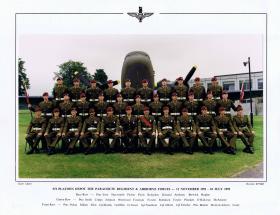
573 Platoon
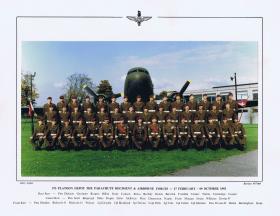
575 Platoon
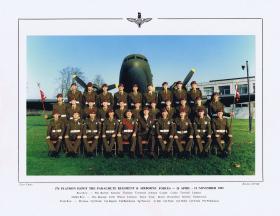
576 Platoon
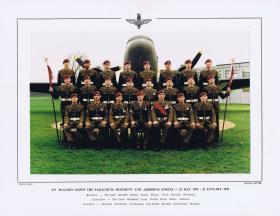
577 Platoon
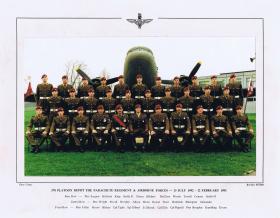
578 Platoon
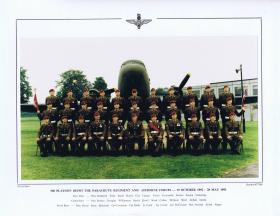
580 Platoon
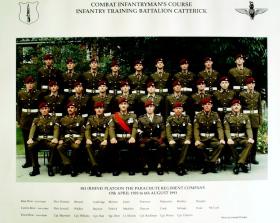
Passing Out photograph of 581 Platoon, August 1993.
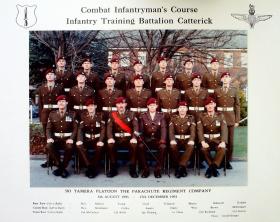
Passing Out photograph of 583 Platoon, December 1993.
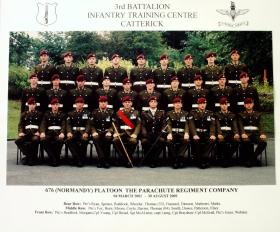
676 Platoon Passing Out photograph, August 2002.
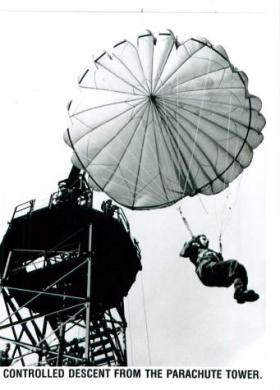
Controlled landing from the parachute tower.
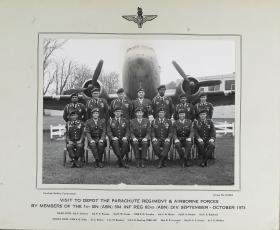
Photograph of American visit to the Airborne Forces Depot
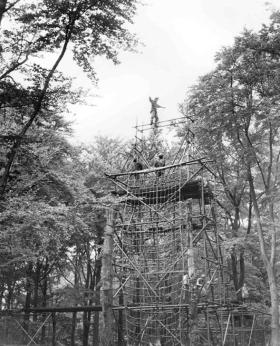
Para recruit walks high balance beams as Instructors look on during P Company
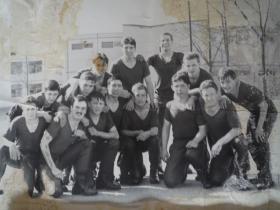
After a Depot " Beasting" Training
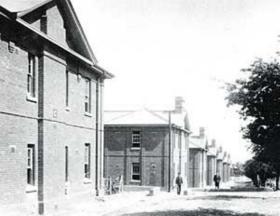
Photo of Albuhera Barracks, Aldershot during the 1950s.
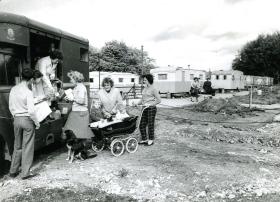
A NAAFI van at Pegasus Village, Aldershot, c.1960
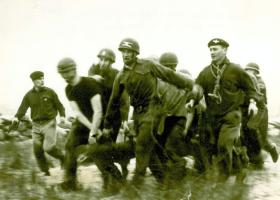
P Company, Log Race, 1960's.
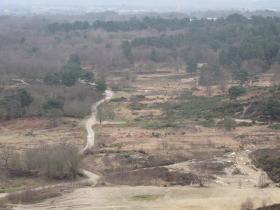
The View From Caesars Camp down onto the training areas, 2011.
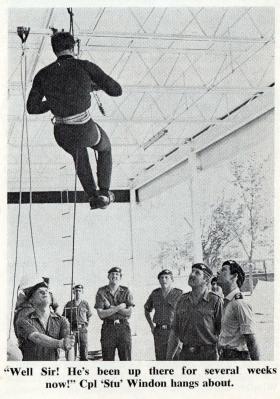
Cpl Windon hanging around during The Colonel in Chief's visit 13 May 1980.
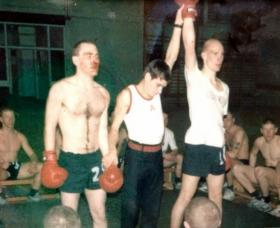
Recruit Pete Gurney milling, Depot, Aldershot, c1991 December.
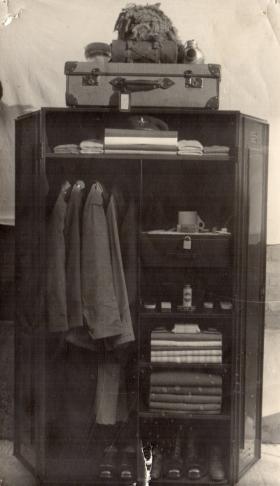
Photograph showing correct layout of uniform mid 1950s
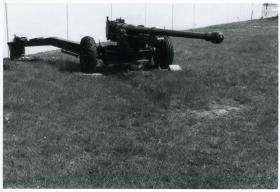
17 pounder anti tank gun
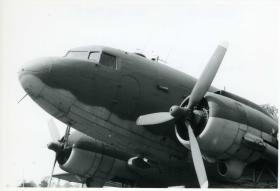
Dakota aircraft YSK p205
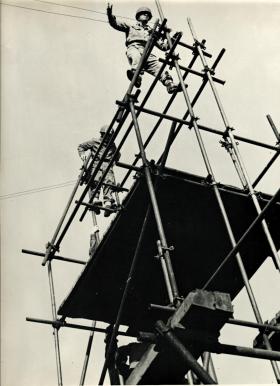
Aldershot Trainazium 1950s
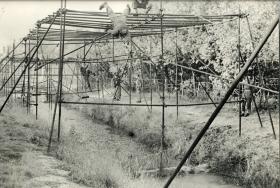
Aldershot water Assault c1950s
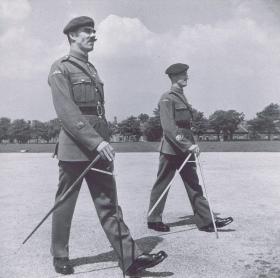
RSM JC Lord and CSM J Alcock on the square at Aldershot, 1947
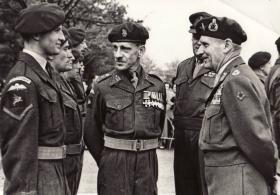
Colonel Darling with Field Marshal Montgomery during a visit to the Airborne Forces Depot, 1949
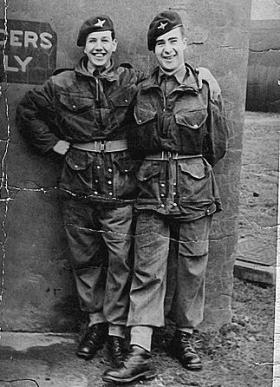
Ptes Cliff Watts (Demonstration Platoon, Depot) and John Warner (2 PARA), January 1949 Beaulieu
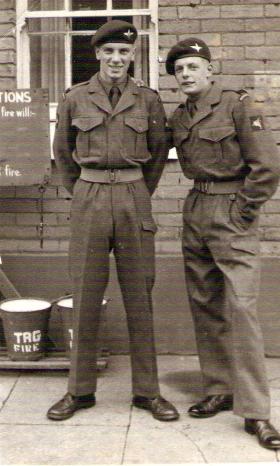
Pte H Wilson and 'unknown' going on first leave after basic training, 1954.
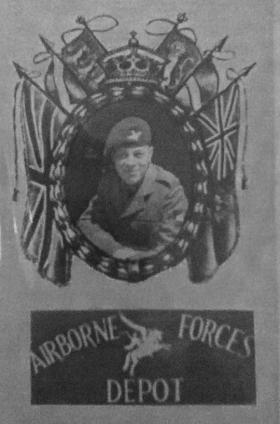
Pte Harry Fynn posing for Airborne Forces Depot photo
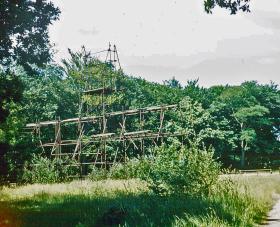
Aldershot Trainasium, circa 1957
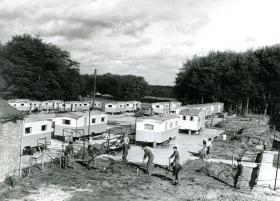
Pegasus Village, built by self-help from 9 Para Sqn RE, Aldershot, 1959
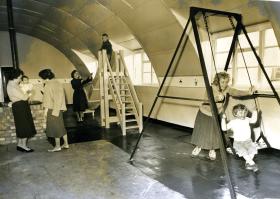
Indoor recreation at the opening of Pegasus Village, 1959
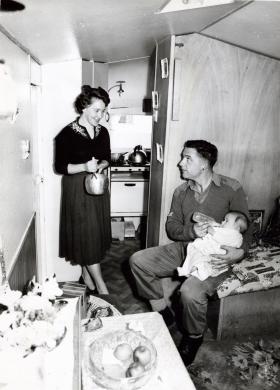
Family in caravan in Pegasus Village, Aldershot, 1960
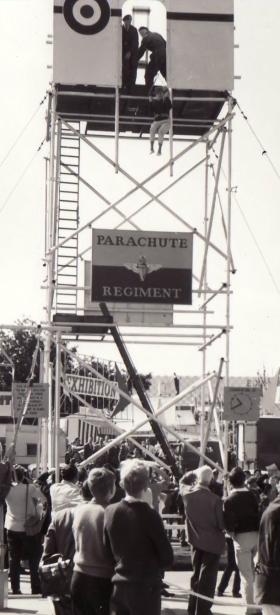
Training Fan run by Depot Staff at Farnborough Air Show, 1961
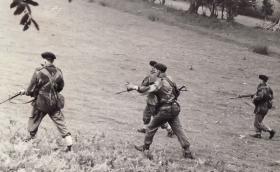
Soldiers advance during Brecon Battle Camp, 1961
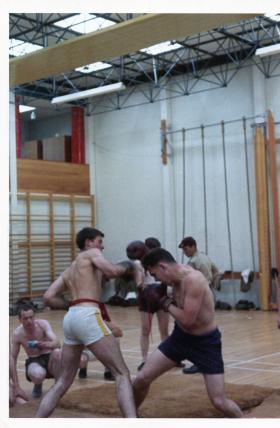
Members of 10 PARA 'Milling' - Browning Barracks' Gym 1968
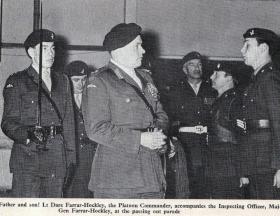
Maj Gen Farrar Hockley at Passing Out Parade for 371 platoon, 1972.
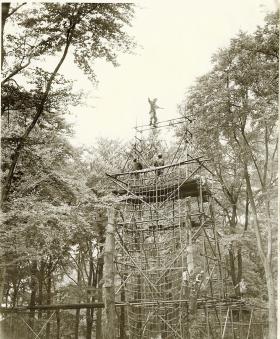
Pte Neil Parkin on the Trainasium, 1974
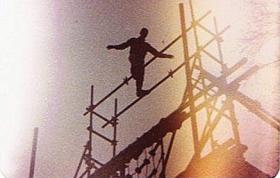
A 10 PARA recruit on the shuffle bars of the Trainasium during P Company, 1977.
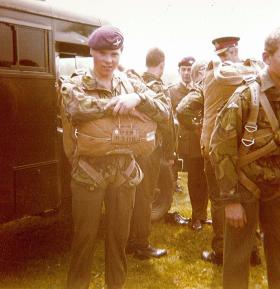
Pte Greg Allen ready to jump after Passing Out Parade of 442 Platoon, 1978.
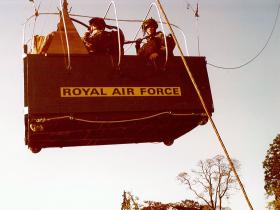
The cage at Queens Avenue, Aldershot, 1979.
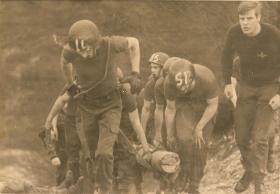
10 PARA Training Wing Log Race Aldershot 1982
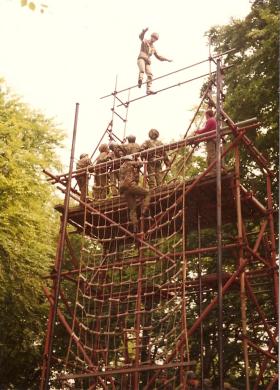
10 PARA Training Wing Trainasium Aldershot July 1983
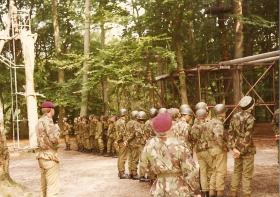
10 PARA Training Wing Trainasium Aldershot July 1983
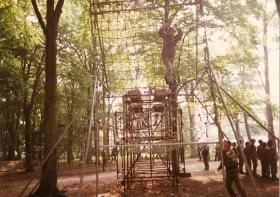
10 PARA Training Wing Trainasium Aldershot July 1983
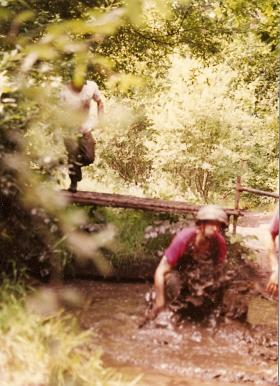
10 PARA Training Wing Assault Course Aldershot July 1983
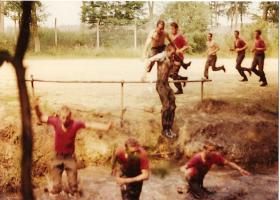
10 PARA Training Wing Steeple Chase Aldershot July 1983
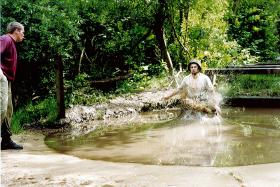
Greg Allen, ‘giving verbal encouragement’ to a recruit during the steeple chase, Depot Para, 1986.
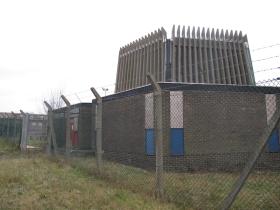
Band Practice Room, Montgomery Lines, Aldershot, 2011.
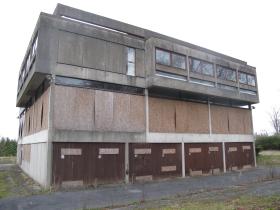
Officers Mess Block, Montgomery Lines, 2011.
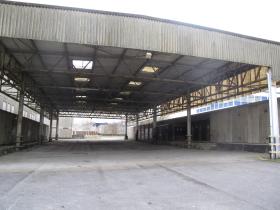
One of the Stores Areas, Montgomery Lines, 2011.
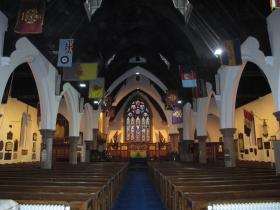
The Interior of the Garrison Church, Aldershot, 2011.
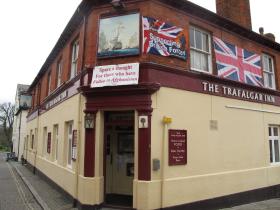
The Trafalgar Inn, Aldershot, 2011.
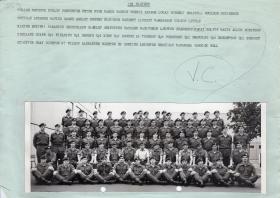
359 Platoon
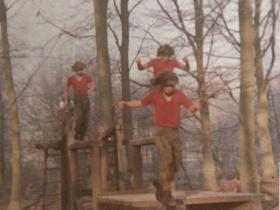
421 Platoon P Coy December 1975. Assault Course.
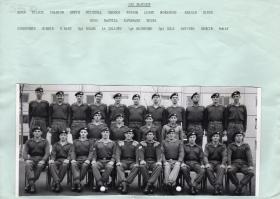
350 Pass Out Group Image 1970
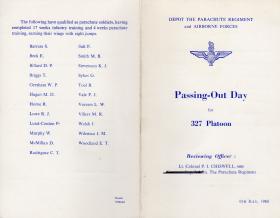
Passing Out Parade leaflet for Platoon 327
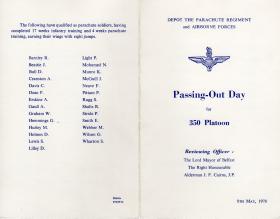
350 Platoon Passing out Parade booklet May 1970
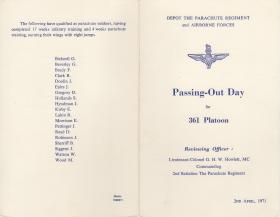
Passing out parade booklet 361 Pln April 1971
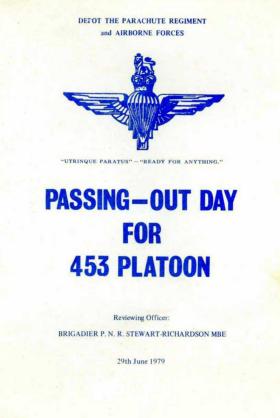
Programme for Passing Out Day for 453 Platoon, 29 June 1979.
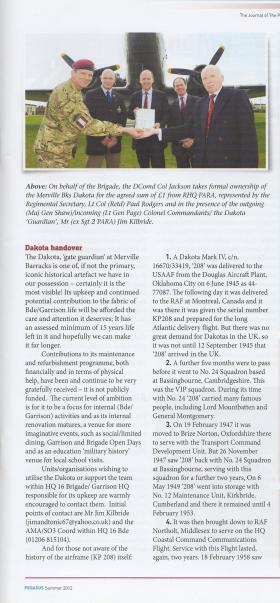
Dakota handover

Patrick Connelly P Coy Pln 1965
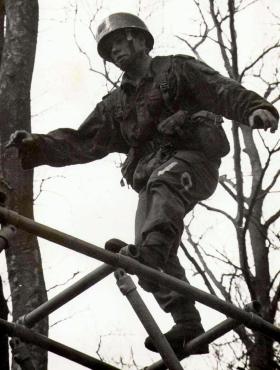
Pte Peter Grundy during P Company, 1979.
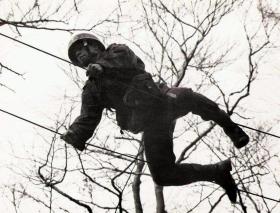
Pte Peter Grundy, P Coy, 1979.
Make a donation to Airborne Assault ParaData to help preserve the history of The Parachute Regiment and Airborne Forces
The Airborne Shop is the official shop of Support Our Paras (The Parachute Regiment Charity RCN1131977).
Profits from all sales made through our shop go directly to Support Our Paras, so every purchase you make with us will directly benefit The Parachute Regiment and Airborne Forces.

Latest Comments
There are currently no comments for this content.
Add Comment
In order to add comments you must be registered with ParaData.
If you are currently a ParaData member please login.
If you are not currently a ParaData member but wish to get involved please register.